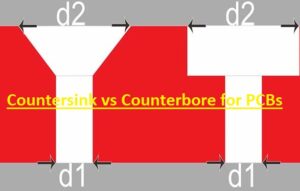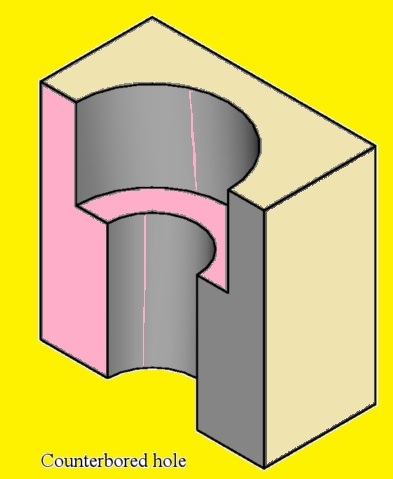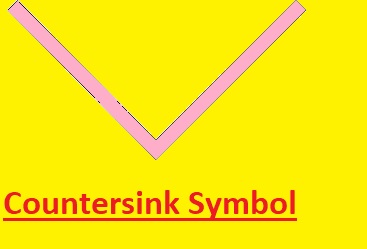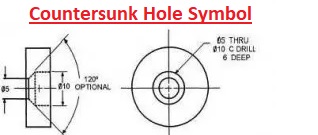 Hello, readers welcome to the new post. In this post, we will learn the Difference Between Countersink vs Counterbore for PCBs. PCB assembly manufacturing is a complicated process from start to ending, and there are a lot of intricacies in the project working time. The main featues in the process is the drilling of holes throughout the board to allow the screw to be fixed strongly with surface-like. So let’s get started with Countersink vs Counterbore.
Hello, readers welcome to the new post. In this post, we will learn the Difference Between Countersink vs Counterbore for PCBs. PCB assembly manufacturing is a complicated process from start to ending, and there are a lot of intricacies in the project working time. The main featues in the process is the drilling of holes throughout the board to allow the screw to be fixed strongly with surface-like. So let’s get started with Countersink vs Counterbore.
What is a Countersink hole?
- The countersink is more complicated than the counterbore. The countersunk hole comes with a canonical shape, that fulfills the shape of the screw which means any screw cap connected with it will be below the board surface. The depth of the hole can be different based on the screw must visible on top of the board, or deeply driven to cover the upper part and hide the look.
- The work countersink is also used to define a cutter that makes the hole on the board that helps the countersunk screw to adjust below the surface of the board when positioned.
- The drilling of the countersink is complicated as compared to the counterbore since angle and accuracy are requried for proper drilling
- They are mostly used in metalworking, woodworking, and PCB board manufacturing
What is a counterbore hole?
The counterbore hole is the first screw that needs to drill on the PCB board. The counterbore hole is cylindrical, a flat-bottomed hole.
it is drilled on the surface of the baord for screw cap fixing, or to sit flush below the board surface.
If anyone uses the counterboring process it is a drilling process that makes an even surface on the inner side of the wall of the pipe. For creating cylindrical, flat-bottomed holes special type of drill is used having two different diameters for cutting,. One makes a hole for the fastener’s body and one larger drill to make the head for fastening like a screw cap.
Counterbore holes can easily drilled due to straight and vertical holes.
Countersink Symbol
- the symbol for a countersink hole is “⌵”
Countersunk Hole Symbol
- The coned-shaped symbolic representation has an angled line crossing the middle, showing the location and size of the countersink hole, used in engineering drawings for showing the hole.
- Normally symbol is configured over the hole.
- As the symbols of countersink and countersunk in engineers’ drawings are interchangeable
Differences Between Countersink and Counterbore

Design
- Counterbore holes are made for crews or bolts with flate bottomed heads that are larger thatn the body of a screw. This desing helps to make a two-diameter hole having a larger dia at the upper side for handling the head of the screw or bolt and a small diameter for the body of the screw or bolt.
- While countersink holes are best when the design needs a screw or bolt with a tapered head. Those holes are drilled at a conical angle that is configured with the taper of the screw head, helping the screw or bolt to sit flush with the board surface. At the time of making countersinks, different types of drills but having different angles existed, commonly used angles are 82 degrees and 90 degrees.
Manufacturing Flexibility
- Counterbore holes are vertical in design and straight and simple to drill. But this simple featues reduces the flexibility. Counterbore holes are matched with size and shape with certain screw heads, normally socket heads or hex head bolts.
- it limits the option for using nonstandard screws or customized mounting for PCB designs. While countersink holes provide adaptability due to a conical design that can handle a larger range of screw sizes and types. These flexible featues are used for different screw head sizes and shapes and offers different applications and features
Which is better for PCBs?
The use of these two processes is based on material at the time of drilling. if the material is wood, countersinking is preffered to avoid damage to wood from over-tightened screws.
At the time of the PCB assembly process, many manufacturers use the counterbore technique rather than countersinking. To avoid any damage to the board, countersinking needed an angle to use and more depth from the drill.
Countersinking also needed more instruments and materials increased time in the manufacturing process and damaged the board.
With use of a counterbore can make a connection with the use of ground or earth terminals that is a physical connection with the earth and work as safe points for surplus current
If needed more secure mounting on PCB board, and counterbore holes are best to use. These holes are larger in size to handle socket fixtures, and screws from them make a more secure connection.
When to use Countersink Drill Bits?
- Ensure that the size of the drill is matched with the screw with the use of drill bits countersink. The larger countersink holes swallow the fasteners or screw heads.
- At that time small holes do not help the screw heat fit in the board. it causes unfit mount.
- But if you try to drive a screw with force in holes, it can damage the material. It occurs when both surfaces are wooden and HDI.
- If the hole is larger screw will get shallow, and if hole is shallow it will not helps screw to fit in surface.
- So proper measurements are important for the drilling process. To get accurate values set the setting of the countersink. The setting comes with a size of countersink, depth of drill bit, and point of center.
- But best to first to some practices for measurement over the scrap material. So set the setting before getting any wrong measurements.
Countersink Vs. Counterbore Drill Bits
There can be many hole drills with drill bits. According to material thickness and required diameter. Both the countersink and counterbore use hole drilles to start process.
At that time drill bits were used to make countersink and counterbore holes in PCB or material.
Both drill holes use a certain type of material for manufacturing. The main objective is to fit fasteners or screws in the working component of the washer.
We cannot neglect the axis and length of screws or fasteners in the counterbore or countersink hole. Different materials are used for manufacturing due to cavity differences in both holes. The cylindrical hole bores in the surface of the material of counterboring.
These holes come with a small diameter at the lower and a larger one at the upper part.
The main purpose is to hot surfaces strongly so they do not separate each other. The head of fasteners moves to the larger edge and the shaft goes to the smaller size. So drill bits of countersink have different sizes and for set at different angles.
Related Topics:
What is Countersink vs. Counterbore Holes in Machining
What are Countersink Holes in Engineering?
FAQs
Write the main difference between countersink and chamfer.
- Countersinks are chamfers but are used to round holes. The other difference is that chamfers are defined at 45 degrees, and countersinks come with angles of 82, 90, 100, and 120 degrees. Countersink angles show as angles between two opposite sides doubling certain angles.
Is countersink be used for a counterbore?
- Countersink makes a conical hole matching the angle of the screw so that when the screw is configured head will sit flush below the surface. The counterbore is used for increasing the opening of the hole generating flat bottom so the socket head screw fits with the surface of the component.
Which materials used for countersinking and counterboring in PCBs?
- Drill bits are used to make countersink and counterbore holes inside a PCB or the material.
Can countersinks or counterbores affect the electrical performance of a PCB?
- The counterbore comes with high holding strenght thatn countersink hole since force applied to the socket cap screw head is parallel to the axis. The force used with a screw or bolt is smoothly distributed over the large surface area. it is not condition with countersunk hole that comes with tapered sides.
Are countersinks and counterbores necessary for all PCB designs?
- Countersink holes are used in compact design where space is an important parameter. The polarized surface makes room for a larger surface area. It is largely used in tight-fitting, compact projects to increase flexibility and offers an area for connections.
Can you countersink a PCB?
Two methods are used for drilling screw holes on the PCB counterbore and countersink. Different screws of different types of screw holes, so type of screws will use largely for showing either drilling counterbore holes, countersink holes, or both for your PCBs.
What is the major difference between counter boring and spot facing?
The difference between counterboring and spotfacing is that the counterbored surface comes with a shoulder at the lower of the hole and the spotfaced surface is flat and at right angles of an axis of the hole.








